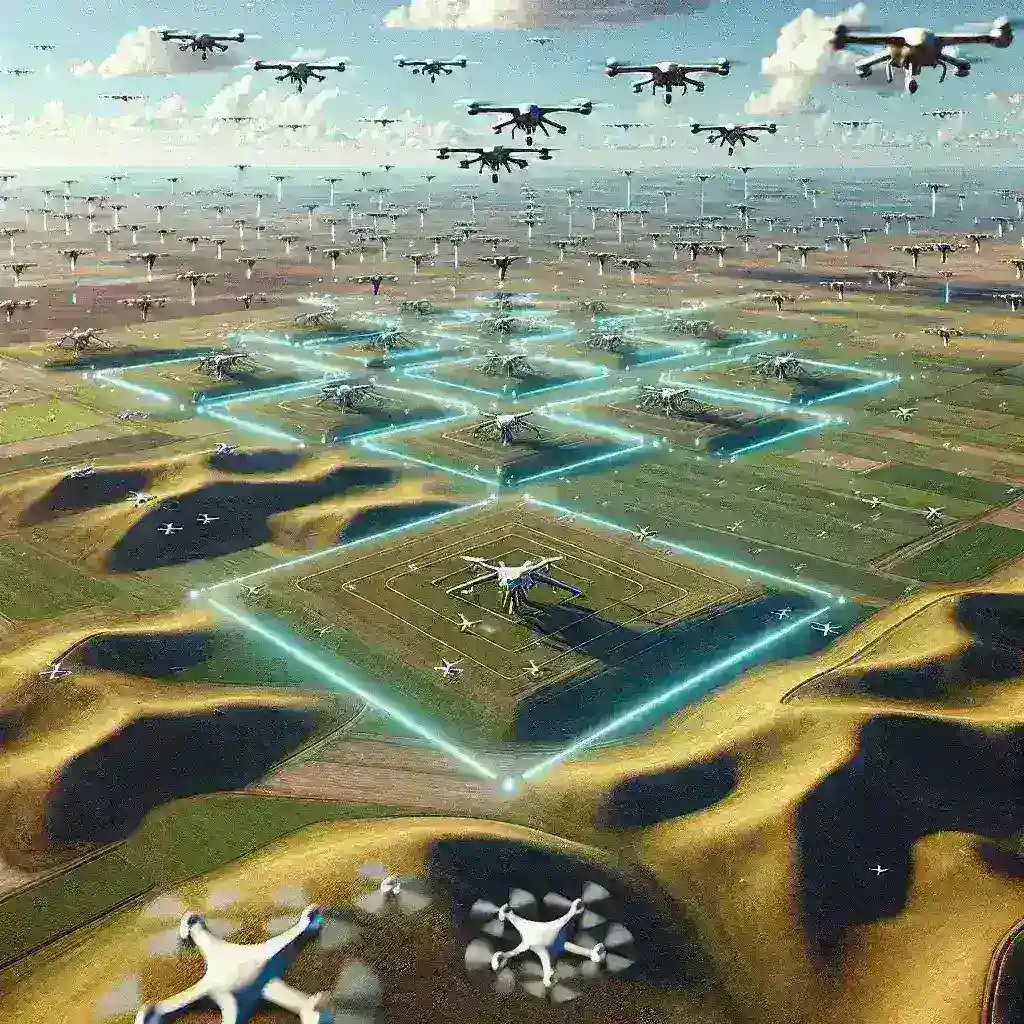Introduction
The integration of artificial intelligence (AI) into military operations is rapidly transforming the landscape of modern warfare. One of the most groundbreaking initiatives is the U.S. Department of Defense’s (DoD) piloting of AI-powered drone swarm coordination. This innovative approach utilizes multiple drones working cohesively to carry out complex missions, enhancing efficiency and effectiveness in various operational scenarios.
Understanding Drone Swarm Technology
Drone swarm technology involves the deployment of numerous drones that can communicate and coordinate with each other autonomously. These drones can execute a wide range of tasks, from surveillance to combat missions, all while adapting to changing environments and challenges.
Historical Context
The concept of drone swarms has its roots in early research on autonomous robotics and swarm intelligence, inspired by the behavior of social insects such as bees and ants. Over the past few decades, advancements in AI, robotics, and communication technologies have made it feasible to deploy swarms of drones effectively.
Current Developments
As of 2023, the U.S. DoD is actively testing various AI algorithms that allow drone swarms to make real-time decisions without human intervention. These algorithms enable drones to assess their surroundings, identify threats, and strategize their collective actions, mimicking biological swarm behavior.
Key Features of AI-Powered Drone Swarm Coordination
- Autonomy: Drones can operate independently, reducing the need for constant human oversight.
- Real-Time Decision Making: The AI algorithms allow drones to analyze data and adapt to new conditions instantly.
- Scalability: The system can be scaled up or down depending on mission requirements.
- Cost-Effectiveness: Utilizing a swarm of smaller drones can be more economical than deploying larger, more expensive systems.
Applications in Military Operations
The potential applications of AI-powered drone swarms in military operations are vast. Here are some notable examples:
1. Surveillance and Reconnaissance
Drone swarms can cover large areas more efficiently than a single aircraft, providing real-time intelligence to commanders on the ground. Multiple drones can record video, gather data, and provide situational awareness, which is critical for tactical decision-making.
2. Search and Rescue Missions
In disaster-stricken areas, drone swarms can be deployed to search for survivors. Their ability to cover vast regions quickly can significantly enhance the speed of search and rescue operations.
3. Combat and Target Engagement
AI drone swarms can engage targets with precision, reducing the risk of collateral damage. By coordinating their efforts, these drones can effectively execute complex attack strategies against enemy installations.
Pros and Cons of AI-Powered Drone Swarms
Advantages
- Increased Efficiency: Swarms can accomplish tasks faster than traditional methods.
- Risk Mitigation: Sending drones into dangerous environments can minimize the risk to human personnel.
- Enhanced Coordination: AI enables drones to work together seamlessly, improving overall effectiveness.
Challenges
- Ethical Concerns: The use of autonomous drones raises questions about accountability and the potential for misuse.
- Technological Limitations: Despite advancements, challenges remain in ensuring reliable communication and coordination among drones.
- Security Risks: The risk of hacking and unauthorized access to drone systems poses significant concerns.
Future Predictions
As technology continues to evolve, we can expect further advancements in AI-driven drone swarm coordination. Here are some future predictions:
1. Enhanced AI Algorithms
The next generation of AI algorithms will likely include more sophisticated machine learning techniques, allowing drones to learn from experience and improve their operational capabilities.
2. Broader Military Integration
As the U.S. DoD refines its drone swarm technology, we may see a wider integration of these systems with existing military assets, creating a more interconnected and effective operational force.
3. Global Adoption
Other nations are likely to follow suit, investing in similar technologies to enhance their military capabilities. This could lead to an arms race in drone swarm technology, reshaping geopolitical dynamics.
Conclusion
The U.S. Department of Defense’s efforts in piloting AI-powered drone swarm coordination represent a significant leap forward in military technology. While the potential benefits are substantial, the associated challenges must be addressed to ensure the responsible use of these powerful tools. As we look to the future, it is clear that AI-driven drone swarms will play an increasingly crucial role in shaping the future of warfare.
